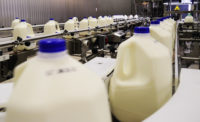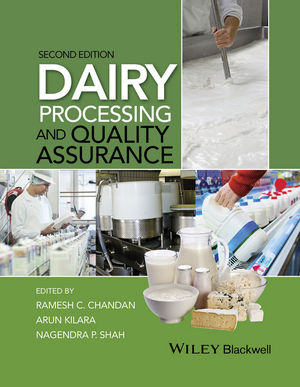Keep an eye on dairy product quality
Proper monitoring of dairy products’ quality throughout shelf life will verify the products meet the expectations of consumers.

In an uncertain world, there is one certainty in the dairy business: a lack of quality means a lack of business.
Consumers believe that the products they buy from the dairy case are safe for their families to consume, and for the most part, they are correct. The dairy industry has a long history of providing safe, wholesome products to customers.
What then differentiates one dairy brand from another in terms of quality? The short answer is consistency and shelf life. Certainly, the consumer has a wide range of products to choose from in the dairy case. Yet many consumers have strong opinions about which dairy product is superior. Often that opinion is based on the consistency of the product and how long it will “keep” in their refrigerator.
So it is imperative that dairy processors monitor the quality of their dairy products throughout the shelf life to verify the products are meeting the expectations of customers. Let’s look at some of the tried-and-true methods for monitoring the quality of our dairy products.
1. Quality starts with raw milk. Raw milk quality is best monitored organoleptically (which we will discuss in a subsequent column) and with a microscope. The quality of the raw milk can be determined prior to receiving by conducting a direct microscopic count (DMC) using a good-quality microscope. Raw milk with a DMC of <50,000 clumps/milliliter is considered good-quality raw milk. Alternately, a preliminary incubation count may be conducted by holding the sample for 18 hours at 55 degrees Fahrenheit and performing a standard plate count (SPC). Counts of < 50,000 colony-forming units/milliliter are considered acceptable.
2. Keep it clean. Most spoilage in today’s products is caused by psychrotrophic bacteria. Of note are the “traditional” gram-negative Pseudomonas spoilage organisms and the gram-positive spore-forming Bacillus spoilage organisms. Both organisms grow at refrigerated temperatures, so the first step in reducing spoilage is to adequately clean all processing equipment using a cleaning and sanitizing program that is monitored with charts, concentration checks, visual inspections, and verification testing such as ATP.
3. Keep it cold. Colder temperatures throughout the processing and storage process mean better quality. While the Pasteurized Milk Ordinance (PMO) still uses 45 degrees Fahrenheit as a standard, we know that for quality products, that temperature is too high. As a rule of thumb, the colder we can store milk, the longer the shelf life and the better the quality. Psychrotrophic bacteria grow well at temperatures over 40 degrees Fahrenheit. Each degree of temperature over 40 degrees Fahrenheit decreases shelf life by about one day. Monitor the temperatures at each step of storage in your process to maintain temperatures under 40 degrees Fahrenheit.
4. Keep it moving. Some facilities store milk for extended periods of time, exceeding the PMO 72-hour tank cleaning requirement by transferring raw milk to another tank. Milk only deteriorates when it leaves the cow. The goal is to move milk from the cow to the store shelf as quickly as possible. Monitor the time of storage and use the milk quickly.
5. Monitor the shelf life of your products. Accurate and systematic shelf-life testing is necessary. Coliform counts and SPC testing on fresh product will NOT indicate the shelf life of your products. Coliform counts are used as post-pasteurization contamination indicators — and are beneficial in determining sanitation and good manufacturing practices issues — but generally will not predict shelf life. To predict shelf life, a stress test such as the Mosely test can be run. This procedure of holding finished product for seven days at 45 degrees Fahrenheit and then conducting an SPC can give us a picture microbiological contamination and potential spoilage of our products. It is also recommended that samples of finished products be stored at 45 degrees Fahrenheit until the end of code to verify that the products really do stand up to their reported shelf life.
A robust monitoring program of these four parameters will go a long way toward customer satisfaction and meeting the consumer’s definition of quality.
Tedd Wittenbrink is technical director, Merieux NutriSciences.
Looking for a reprint of this article?
From high-res PDFs to custom plaques, order your copy today!









